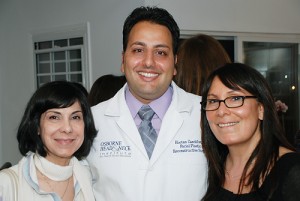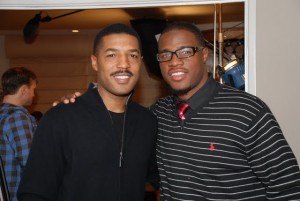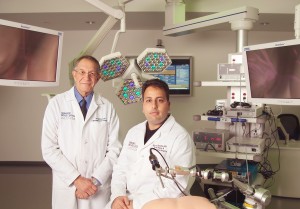- Hereditary Hemorrhagic Telangiectasia - May 25, 2016
- Hereditary Hemorrhagic Telangiectasia: Septal Perforation and Nose Bleeds - May 23, 2016
- Hereditary Hemorrhagic Telangiectasia: Epistaxis and Septal Perforation - May 18, 2016
- Wegener’s Granulomatosis: Autoimmune Disease and Multi-Focal Septal Perforation - May 9, 2016
- Kyle Korver: Facial Injury and Nasal Fracture - March 24, 2015
- Russell Westbrook: Facial Injury and Surgery - March 5, 2015
- Mega-perforation: Pushing the Limits of Septal Perforation Repair - November 26, 2014
- Septoplasty Complication and Septal Perforation - November 24, 2014
- Nose Picking (Rhinotillexis) and Septal Perforations: Why I should stop picking my nose…? - November 24, 2014
- Nasal Fractures, Septal Hematoma, and Septal Perforation: Simultaneous Rhinoplasty and Septal Perforation Repair - October 1, 2014
OKLAHOMA CITY, Feb. 28, 2015 – Oklahoma City Thunder guard Russell Westbrook underwent a successful procedure to address a fracture to the zygomatic arch of his right cheek, Thunder Executive Vice President and General Manager Sam Presti announced.
The procedure was performed by Dr. John Joseph Rehm and Dr. Jason Hamilton with Thunder medical personnel present at the Osborne Head and Neck Institute in Los Angeles, Calif. Westbrook will miss tomorrow’s game against the Los Angeles Lakers and will be re-evaluated later this week.
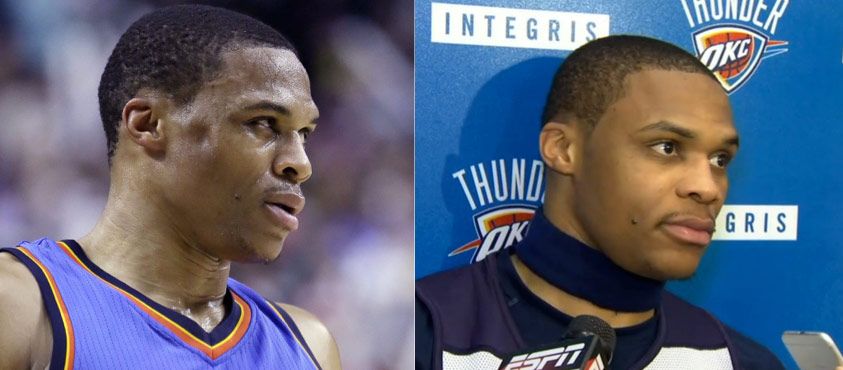
Condition Background
A zygoma fracture, is a complex fracture of multiple bones that comprise the area commonly referred to as the cheekbone. Treatment of this injury is highly dependent on the extent of the facial trauma incurred as well as the amount of time that has passed since the initial injury.
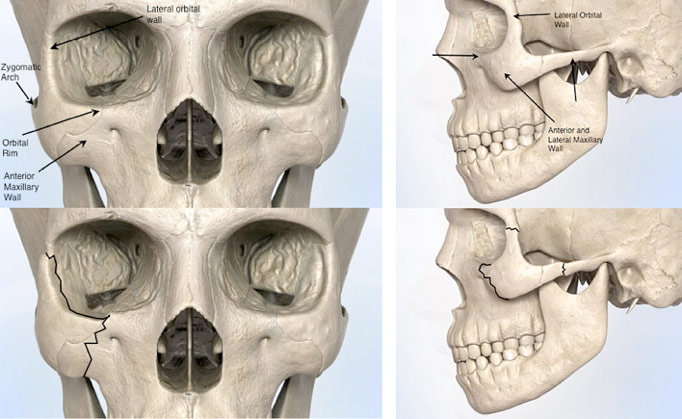
Depending on the severity of the facial trauma, zygoma fractures can be treated in different ways.
- Uncomplicated Cases
Uncomplicated cases typically include fracture of one or multiple bones with little to no fragment displacement. Because the bones remain in relatively their original locations, little intervention is required as long as the patient follows the physician’s instructions and avoids activities that may inadvertently lead to fragment displacement.
- Moderate Cases
Most commonly, cases of zygoma fracture are moderate in severity and include some form of fragment displacement, requiring realignment and fixation. This can be accomplished through minimally invasive techniques where small incisions are made inside the mouth, above the brow, or near the temple. Small hardware can be placed to hold fragments in place during the healing process. Care must again be taken to protect the site of injury from new trauma or excessive movement during healing.
- Severe Cases
In cases of severe facial trauma or involvement of critical or specialized systems such as the eye, advanced surgical intervention may be necessary. Severe displacement of bone fragments and damage to the delicate underlying structures of the face requires prompt and specialized attention to avoid potentially permanent complications.
It is recommended that all cases of facial trauma be promptly evaluated by a qualified facial trauma specialist. These subspecialty-trained physicians are experts in evaluating and treating facial trauma injuries of all levels of complexity. A facial trauma specialist is best suited at customizing a treatment choice specific to your individual injury.
Comprehensive evaluation of facial trauma injuries typically includes the following components:
- Review of medical history
- Analysis of type of injury sustained
- Focused physical examination of facial trauma
- CT imaging to review extent of facial injury and underlying damage
- Analysis of functional and cosmetic changes due to injury
- Presentation and discussion of treatment options
- Specialized protocol to promote optimal results
- Close followup by your surgeon
Because facial trauma is typically accompanied by significant amounts of swelling, the true extent of underlying damage is not readily evident to the patient until weeks after inflammation has completely resolved. At this point, because healing has already begun, any adjustments to misaligned bone fragments cannot be easily made. Prompt evaluation following trauma is suggested to avoid unwanted functional and/or cosmetic changes.
Physicians at the Osborne Head and Neck Institute’s Facial Reconstructive Surgery Division specialize in facial trauma and facial sports injury. They are nationally renowned for their expertise in facial injury. The physicians hold dual certification in both otolaryngology/head & neck surgery and plastic & reconstructive surgery. This unique combination of specialties allow for a thorough evaluation and treatment of both functional and cosmetic issues related to facial trauma.
Click here for more information about cheek fractures and treatment options.
To learn more about Dr. Jason Hamilton or facial trauma treatment, please visit: www.facialtraumamd.com.

